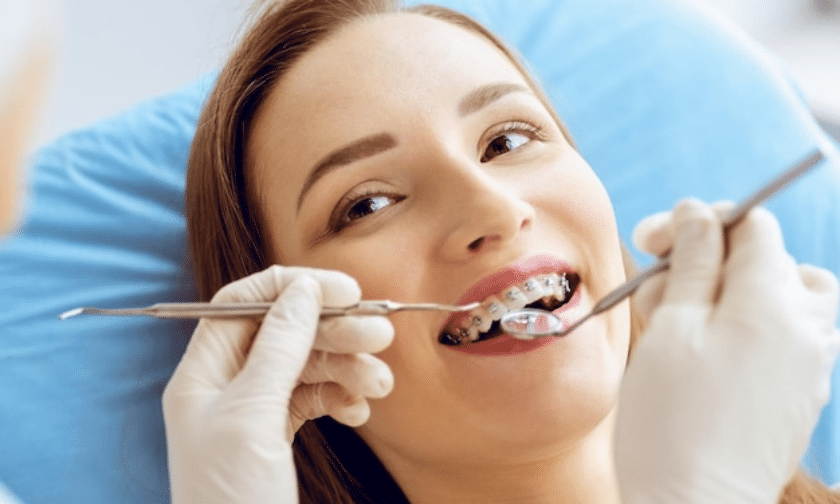Fascination About Legacy Orthodontics
The Single Strategy To Use For Legacy Orthodontics
Table of Contents8 Easy Facts About Legacy Orthodontics ExplainedThe smart Trick of Legacy Orthodontics That Nobody is DiscussingWhat Does Legacy Orthodontics Do?Legacy Orthodontics Can Be Fun For AnyoneA Biased View of Legacy Orthodontics
In enhancement, we provide adjustable therapy routines, versatile payment alternatives and a fun, satisfying experience.An orthodontist is a dental professional educated to diagnose, stop, and treat teeth and jaw abnormalities. Orthodontists function with people of all ages, from youngsters to adults.
Malocclusion, or misaligned teeth, can lead to dental concerns, including tooth degeneration, gum tissue disease, and tough or agonizing chewing. Not everyone is birthed with straight teeth. If you have a poor bite or huge areas in between your teeth, you may wish to seek advice from a dental practitioner focusing on orthodontic care.
3 Easy Facts About Legacy Orthodontics Described
( Picture Credit Rating: DigitalVision/Getty Images) Orthodontists utilize fixed and detachable oral devices, like dental braces, retainers, and bands, to change the setting of teeth in your mouth. Orthodontic treatment is for dental abnormalities, consisting of: Jagged teethBite problems, like an overbite or an underbiteCrowded teeth or teeth that are too far apartJaw misalignmentThe goal of orthodontic therapy is to enhance your bite.
A healthy bite ensures you can eat, chew, and speak effectively. While you might consider orthodontists as mostly for kids or teens that need braces, they can deal with dental problems at any age. Orthodontists participate in college, dental school, and orthodontic school. After college graduation, they invest 2 or 3 years in an orthodontic residency program.
All orthodontists are dental professionals, yet not all dental professionals are orthodontists. Orthodontic residency programs provide extensive, concentrated direction for dental specialists. They concentrate on 2 areas: How to properly and safely move teeth Exactly how to effectively guide growth in the teeth, jaw, and faceOnce an orthodontist has finished training, they have the option to become board licensed.
Legacy Orthodontics Things To Know Before You Get This
Malocclusion leads to tooth congestion, an askew jaw, or irregular bite patterns. Malocclusion is generally treated with: Your orthodontist affixes metal, ceramic, or plastic square bonds to your teeth.
Some individuals need a headgear to aid relocate teeth right into line with stress from outside the mouth. A retainer is a custom tool that maintains your teeth in area.
They're most often made use of on kids. They can produce added room in the mouth without needing to pull teeth. If you have a serious underbite or overbite, you may require orthognathic surgical procedure (also called orthodontic surgical procedure) to extend or shorten your jaw. Orthodontists make use of wires, medical screws, or plates to support your jaw bone.
You may need to see an orthodontist if you have: Crowding or otherwise enough room for every one of your teethOverbite, when your top teeth come over your bottom teethUnderbite, when your base teeth are as well much forwardSpacing or problems with gapsCrossbite, which is when your top teeth fit behind your bottom teeth when your mouth is closedOpen bite or an upright gap in between your front base and top teethMisplaced midline, when the center of your base and upper teeth don't line up Fixing an oral malocclusion can: Make attacking, chewing, and speaking easierImprove the balance of our face and your general appearanceEase pain from temporomandibular joint conditionsDifferent your teeth and make them simpler to clean up, assisting protect against tooth degeneration or dental caries It's frequently a dental expert who first notifications misaligned teeth during a regular test.
The Only Guide to Legacy Orthodontics

Throughout your very first orthodontic examination, you'll likely have: A dental examPhotos taken of your face and smileDental X-raysPanoramic (360 level) X-rays of your face and headImpressions to produce molds of your teethThese examinations will certainly assist your orthodontist understand how to wage your therapy. leesburg braces. An orthodontist is a dental professional that's had training to treat your teeth and jaw
An orthodontist is concentrated on your bite, so something like a chipped tooth would be taken care of by a dental practitioner. Orthodontists are focused on your bite, or the means your teeth fit with each other, and the straightness of your teeth.
Ever wondered exactly how celebrities always seem to have completely straightened teeth? The response typically hinges on the knowledgeable hands of an orthodontist. What exactly does an orthodontist do? Orthodontists are oral experts that concentrate on dealing with abnormalities in the teeth and jaws. Their experience surpasses just creating a stunning smile; it includes improving your overall oral health and feature.
Some Ideas on Legacy Orthodontics You Should Know

While dental braces are the most typically acknowledged orthodontic treatment, orthodontists have a diverse toolkit at their disposal. The particular method chosen depends on the seriousness of the instance, the patient's age, and private choices. These tried-and-true braces use a system of braces bonded image source to the teeth and linked by wires.
Clear aligners, like Invisalign, are a popular alternative for people seeking an extra discreet treatment alternative. These removable trays are tailor-made to gradually move the teeth's placement. Headgear may be utilized in combination with braces or aligners to use additional targeted forces, specifically for dealing with jaw disparities. In cases of narrow jaws, palatal expanders can be utilized to develop room for proper tooth placement.